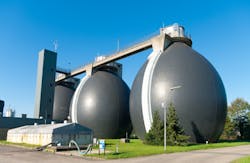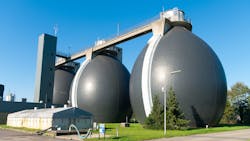The United States needs to construct more energy-from-waste (EfW) facilities to ensure that methane emissions from waste deposited at landfills is reduced, while at the same time cutting down on the proportion of fossil fuels being used for power generation, heat and transport, according to the think tank Center for American Progress.
Every year, 390 million tons of trash are generated in the United States, or about 7 pounds of garbage per person every day. The vast majority of this trash is deposited at landfills where it decomposes, releasing methane in the process. Methane is one of the most powerful greenhouse gases that contributes to climate change.
The alternative that EfW facilities present is far more environmentally friendly and could help solve the nation's waste problem, while at the same time providing clean energy to businesses and households, the think tank said. To further reduce their environmental footprint, states could implement compatible EfW and recycling strategies, the Center for American Progress also noted. At present, these methods of dealing with waste are relatively underdeveloped and have the potential to improve significantly. Thanks to recycling and composting, the annual waste of 390 million tons is reduced to 296 million tons. Developing a nationwide waste standard with fixed mandatory levels of waste to be processed at EfW facilities and landfills could help this number drop further.
The benefits of EfW plants are indisputable. According to estimates from the U.S. Environmental Protection Agency (EPA), every ton of trash processed at such a facility leads to the prevention of a ton of carbon dioxide being emitted into the atmosphere. This is because the trash burned at EfW facilities does not release methane and the electricity generated saves the greenhouse gases that would otherwise have been generated from coal and natural gas facilities. Similarly, a study from the European Environmental Agency has revealed that an increase in recycling rates in EU member states would lead to a decrease in greenhouse gas emissions.
RELATED: Scientist develops method for producing electricity from wastewater
Currently, landfills in the United States are using different technologies to reduce methane emissions, such as trapping methane and using it as energy. This method is applied in 560 of the 1,900 landfills across the country. However, EPA officials stated that methane trapping technology still results in two to six times higher greenhouse-gas emissions than EfW plants.
EfW facilities can be highly efficient but how do they work? After the trash has been delivered to the plant, it is dropped into a pit from where it is transferred to a combustion chamber. There the garbage is burned and the heat boils water and creates steam, which then spins turbines to generate power. During the process, fly ash, particulate matter and metals are caught by filters and are collected for recycling. Gases from the burned waste are also collected, filtered and cleaned before being emitted.
The biggest challenge in constructing EfW facilities is the large upfront cost. Building a plant costs approximately $100 million but the cost can be two or three times higher, depending on the size and capacity of the facility. However, an EfW facility ultimately pays off as, in the long run, these facilities prove more cost-effective than depositing trash in landfills, the think tank pointed out.



